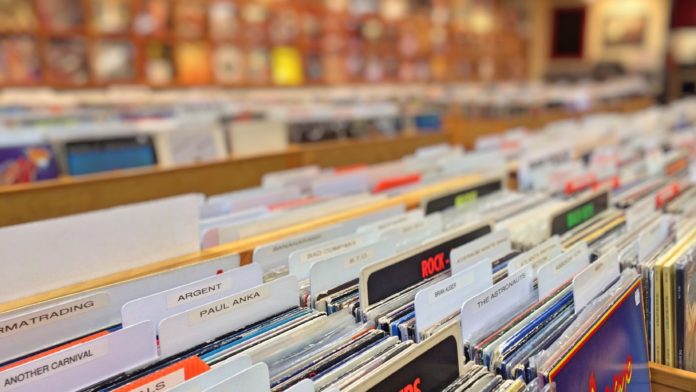Now that we can easily listen to music digitally, what’s the appeal of vinyl records?
Canada saw its highest vinyl sales in 20 years last year, cementing vinyl’s position in national music sales as a significant minority.
There’s plenty about the format that enhances the experience of listening to music. Listening album-by-album can do away with the fickleness of jumping from one place to the next on YouTube or Spotify, and shopping for vinyl is a lot of fun in itself.
But the claim that vinyl is the superior recording format is a case of feelings over facts, at least on a technical level. Analog formats are riddled with problems that their digital counterparts can avoid: wow and flutter, physical limitations on dynamic range, and degradation of the material, not to mention the cost and weight.
Records impart a particular tone over the mix which is highly appealing to some people’s tastes, but it is not as capable as modern formats when it comes to accurate reproduction of a master recording.
Grooves emerging from grooves
Any sound you can imagine can be mathematically represented as a squiggly, one-dimensional line that represents these fluctuations. The eureka moment in the 1800s was when it was discovered that the squiggles can be embedded in all manner of media.
To better understand the digital vs. analog debate, it helps to understand a bit about the properties of sound. Sounds are rhythmic fluctuations in the pressure of whatever medium they are passing through. These fluctuations can be as simple as a sine wave (warning: this one might alert your cats), but for more complex timbres, the waveforms become more complex themselves.
The frequency of a sound determines a sound’s pitch. Frequency is measured as the number of wave cycles per second, a value expressed in hertz (Hz). The human hearing range is between 20 Hz and 20,000 Hz, but as we move into middle age, the upper limit of most people’s range becomes limited to 16,000 Hz.
In a vinyl record, sound waves are encoded into the shape of the groove, but the physical limitations of the format mean that they must play without skipping or distorting.
For example, vinyl struggles with higher frequencies and sibilance, which can distort the sound. The solution for audio engineers is to master vinyl audio differently to accommodate this, but dynamic and frequency ranges take a hit, leaving an incomplete ‘snapshot’ of the master recording.
An additional problem for vinyl is that when the stylus moves inward on the disc and the circumference shrinks, the revolution rate increases and sound waves become harder for the needle to track accurately. This exacerbates the dynamics issue and is also why a lot of old records ended with less sonically-complex pieces such as ballads.

The digital revolution
In the digital realm of CDs and MP3s, recordings are encoded through a process called sampling, where the physical properties of sound are represented by ones and zeroes. Extremely high-quality, uncompressed FLAC and WAV files offer pristine quality with no distortion and a frequency range that more than covers our ears’ capabilities.
One of the reasons why vinyl made a comeback is due to the mucking-up of digital audio’s reputation. As the internet and file sharing became mainstream towards the end of the 90s, an overwhelming amount of highly compressed MP3s saturated speakers the world over.
This “lossy” format cuts out a great deal of the sonic information in a file – much greater than what vinyl cuts out – but it also makes them much smaller and easier to transfer online. Unfortunately, enough time passed for biases against digital files to become ingrained.
So, which medium reigns supreme?
Millions of vinyl-touting audiophiles can’t be wrong, can they? Yes and no. The argument for technical superiority is a myth, but there are valid reasons to justify a preference.
The imperfections and character imparted by older formats via hiss, crackles, and pops add aesthetic value to a listening experience, but most importantly, is the legendary “warmness” of vinyl sound.
University of Waterloo audio researcher Stanley P. Lipschitz explained to Popular Science that this can be attributed to an unintentional technical boost. As a record plays, the sound waves from the speaker and oscillations of the needle cause the record to vibrate which in turn causes an accentuation of mid to upper-mid frequencies (1-5kHz), creating a ‘fuller’ sound.
Human hearing is extremely sensitive in this range; vocals, guitars, and snare drums, ubiquitous in popular music, are especially prominent here.
This frequency accentuation is technically a form of distortion, albeit very subtle, but it is often claimed to be a more natural representation of music by the vinyl community. “Some people mistake this defect for a virtue,” Lipshitz says.
This ‘warmness’ idea is the pivot point of subjectivity in the digital versus analog debate; the happy mistakes which make or break the experience for the listener. If you feel vinyl is best, you’re not wrong; just remember that it’s your perception that’s giving it the edge.










































